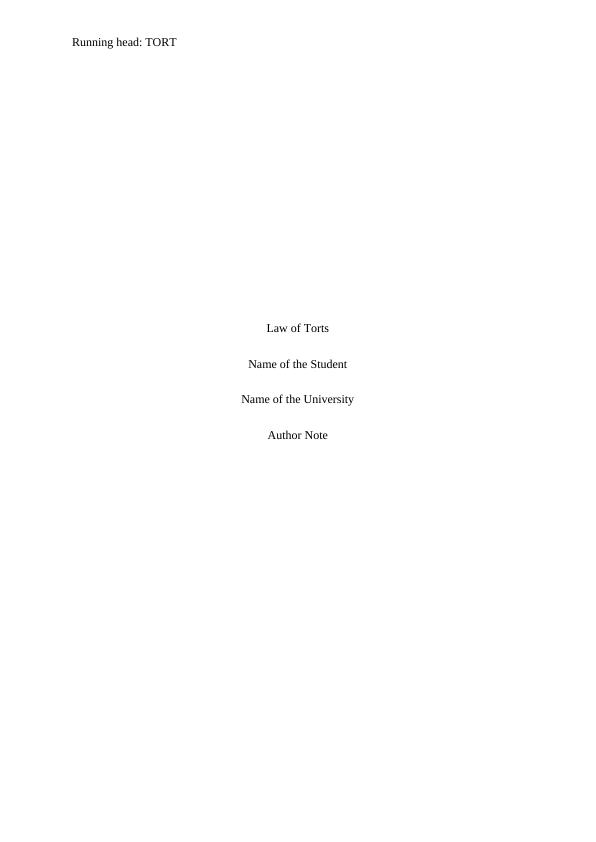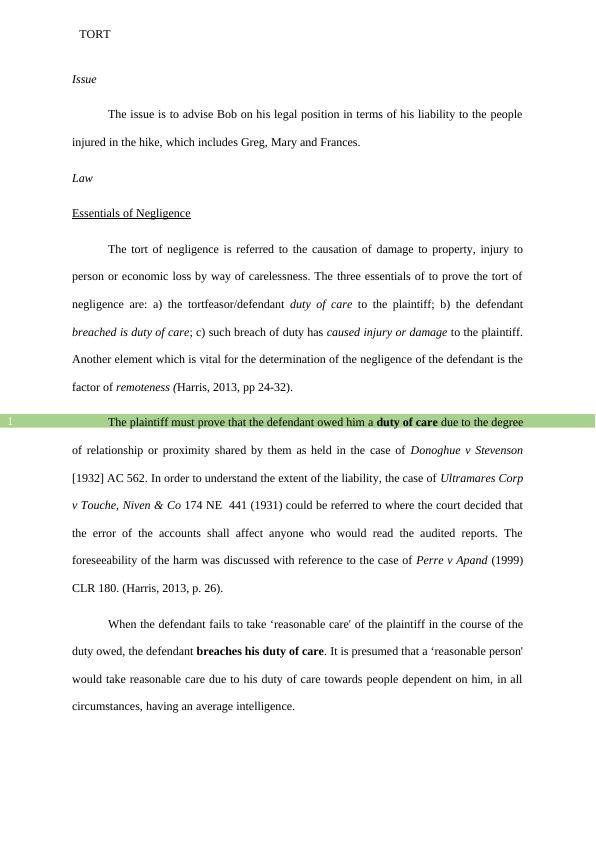Theories of the Common Law of Torts Assignment
Write a 1000-word answer to a problem-type question using the ILAC format, focusing on the elements of negligence and defenses in a case of negligence.
6 Pages1270 Words18 Views
Added on 2022-09-01
Theories of the Common Law of Torts Assignment
Write a 1000-word answer to a problem-type question using the ILAC format, focusing on the elements of negligence and defenses in a case of negligence.
Added on 2022-09-01
ShareRelated Documents
End of preview
Want to access all the pages? Upload your documents or become a member.
BUS107 Corporation Law Assignment: Tort of Negligence
|6
|1378
|117
Business Law Discussion 2022
|7
|1293
|24
Law 504 Case Study | Assignment
|7
|1314
|37
Civil Liability of Organizations in Tort Law
|12
|898
|98
Case Study Analysis
|7
|1723
|270
Tort of Negligence in Police Force: Case Study of Sergeant McDonald
|4
|1322
|82



